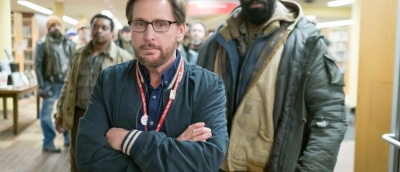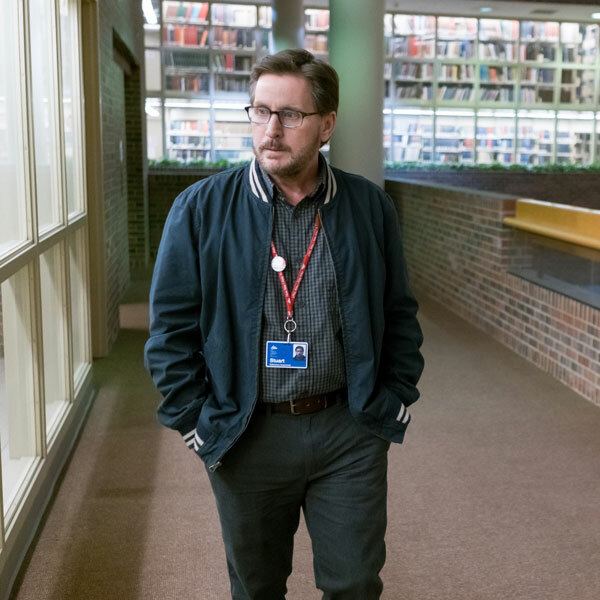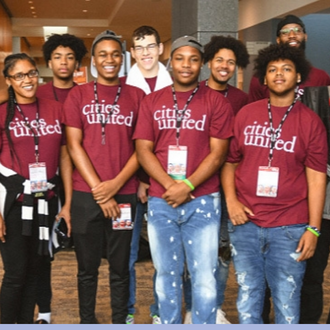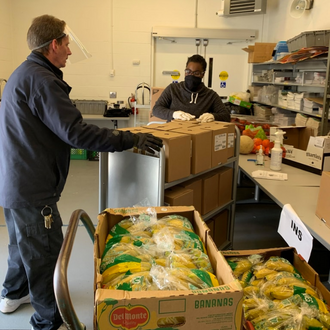ULC Talks Public Libraries with Emilio Estevez


Emilio Estevez directed, wrote and stars in The Public, which premieres on April 5, 2019. This film tells the story of a group of homeless patrons who take refuge at their local library during an extreme cold front. With local emergency shelters at full capacity, these patrons stage a nonviolent sit-in at the library in order to stay within the building after closing time — leading to tense negotiations with local police and sensational coverage by local media, with the library’s staff caught in the middle.
ULC reached out to Emilio Estevez to learn more about his inspiration and research for the film, and how the film can open minds to the roles of 21st-century libraries and serious issues facing today’s communities.
Libraries are not often portrayed on the big screen. What inspired you to work on a film set in a public library? What kind of reactions have you gotten from librarians about this film?
The story was originally inspired by an essay which was printed in the LA Times 12 years ago. It was written by an outgoing Salt Lake City librarian named Chip Ward. The piece examined how libraries have become de facto homeless shelters and how modern-day librarians had become first responders and de facto social workers. After reading the article, I visited the Central Library branch in downtown Los Angeles to see if this was indeed the case. Of course, this was not an isolated issue that was only happening in Utah. The truth of Mr. Ward's piece was evident in Los Angeles and all across the United States.
We were invited to screen the film at the ALA Annual Conference in New Orleans in June of 2018 and then again at the Midwinter Conference in Seattle in January of this year. In both instances I was, of course, very nervous about screening for a theater full of librarians. I worried that if we didn't stick the landing and pass the "smell test" at ALA, we would be sunk. As the film ended and I walked to the front of the stage to address the audience, I was met with thunderous applause and a standing ovation. As we turned the Q&A over to the audience for questions, the first person who spoke asked, "How did you get us librarians so right?"
This was a very gratifying moment for me and I was able to breathe an enormous sigh of relief.
In the film, you have some fun with the common misconception that libraries and librarians are only focused on books. Why did you feel it was important to challenge that stereotype?
I believe it was important to not only challenge the stereotype of what the day-to-day work shift of a librarian looks like (they don't sit around and read all day, people!), but also what the face of a modern-day librarian looks like.
The role of a modern-day librarian looks very different than the libraries most of us remember from our youth. The services that libraries provide to the community are as vital as having access to clean water and air.
Based on your experience researching, shooting and promoting this film, how did your perception of public libraries change, if at all? How do you hope the film will help change the public perception of 21st-century libraries?
The role of a modern-day librarian looks very different than the libraries most of us remember from our youth. The services that libraries provide to the community are as vital as having access to clean water and air.
Author and activist Anne Lamott wrote, "Communities without libraries are like radios without batteries."
In our ever-changing and always challenging political climate, libraries are not only safe havens for the poor and marginalized to escape the elements, libraries provide these individuals with access to Wi-Fi for entertainment and job and housing searches, as well as — perhaps most importantly — access to the facts and to the truth, free of ads and noise.
My hope for the film is that our story and the setting inspire people to revisit their public library — to stoke their curiosity and imagination, to move away from a "curated life" and break free of the echo chambers of sameness where growth does not occur.

The portrayal of community members experiencing homelessness is something we don’t often see as central to movies today. How did you ensure that your portrayal of these individuals was responsible, humanizing and true to life?
It was vital for me to portray these individuals with dignity — giving them faces and names and community among each other. It was vital to humanize each of these characters. I also found that using humor as a window to the characters was an important device that allows the audience to lean into them, as opposed to "othering" these folks — which is often the case in real life situations. We were fortunate enough to have included many individuals in the Cincinnati area who had lived experience to join the core cast of background artists in the film.
The Public focuses on a number of issues, including homelessness, mental health, economic justice, racism and inequality. How do you see the role of this film, and of libraries in general, in advancing dialogue and action to address these serious issues?
My hope is that the film would play an important role in furthering the conversation about the enormous amount of work that still must be done to eradicate many of the disturbing issues that we have begun to normalize. It's simply not okay that so many of our fellow citizens are falling through the cracks in a country as wealthy and as industrialized as the United States.
The library is the cornerstone of social infrastructure — that rare place where upper-, middle- and lower-class people have an opportunity to work in the same space, sometimes side by side, all with the same goal in mind.
You shot most of the movie at night at one of our member libraries (The Public Library of Cincinnati and Hamilton County). Could you describe how you worked together with the team at PLCHC, and why you felt it was important to film in an actual library?
We had neither the resources nor the time to build the sets and create our own library. I owe a tremendous amount of gratitude to the Cincinnati and Hamilton County library system for putting their trust in me and in the project and allowing us access to film in their downtown branch buildings.
In a lot of ways, The Public is a movie about democracy. The homeless patrons in the film begin an act of civil disobedience in response to a perceived failure in services by their city. In what ways does the library provide the ideal setting for depicting democracy in action in today’s world?
Simply put, there is no first-class cabin in your local public library. The library is the cornerstone of social infrastructure — that rare place where upper-, middle- and lower-class people have an opportunity to work in the same space, sometimes side by side, all with the same goal in mind: to access facts, information and community resources that are free for all.
Emilio Estevez is a world-renowned actor, director and writer, known for films such as The Breakfast Club, The Mighty Ducks and Bobby.
Related Articles

The Library’s Unique Role in Reimagining Public Safety
Cities United
Discover how libraries can actively engage community members and intentionally elevate the critical conversations necessary for real change.
Learn More

Reimagining Library Spaces to Provide Essential Community Services
Urban Libraries Council
Learn how ULC libraries across North America are transforming their physical spaces to support community relief and recovery efforts during the COVID-19 pandemic.
